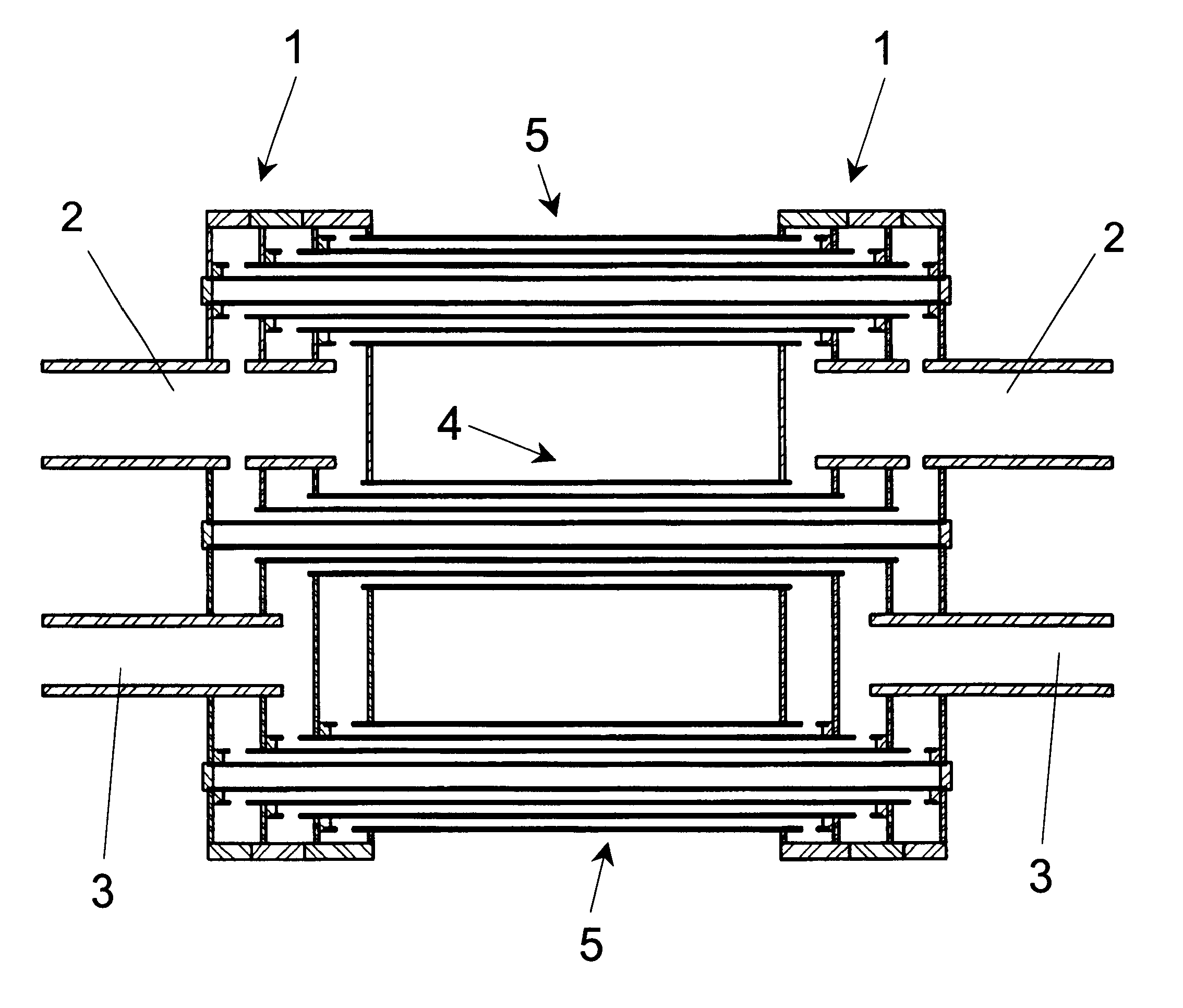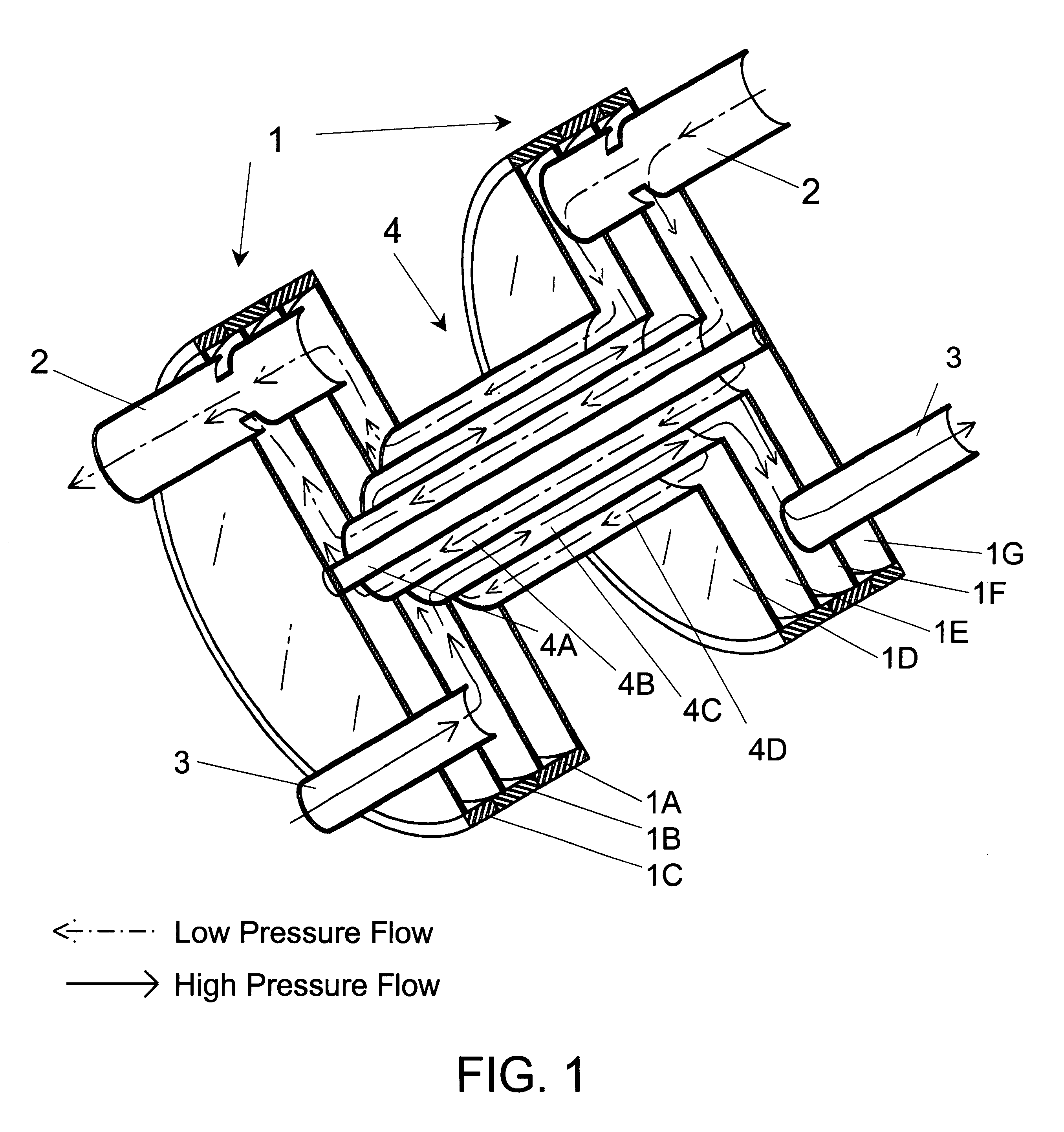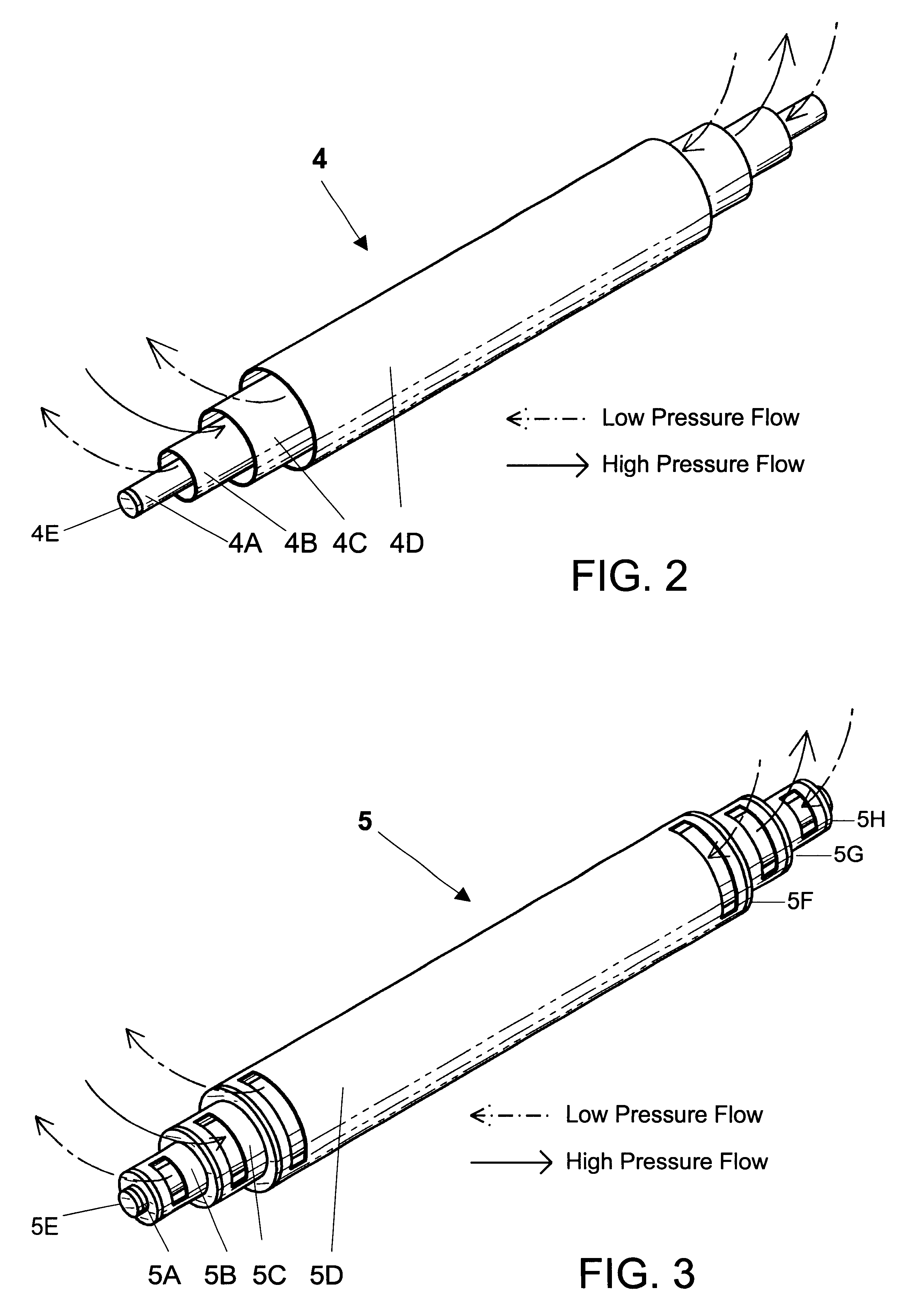Annular flow concentric tube recuperator
a concentric tube and recuperator technology, applied in the direction of indirect heat exchangers, stationary tubular conduit assemblies, lighting and heating apparatus, etc., can solve the problems of flow leakage, lower heat recovery, and higher cos
- Summary
- Abstract
- Description
- Claims
- Application Information
AI Technical Summary
Benefits of technology
Problems solved by technology
Method used
Image
Examples
Embodiment Construction
The basic components of the annular flow concentric tube recuperator are shown in the simplified cross-section of FIG. 1. The recuperator consists of two substantially identical header assemblies 1, two substantially identical low pressure flow tubes 2, two substantially identical high pressure flow tubes 3, and multiple concentric tube assemblies 4, of which, for drawing simplicity, only one is shown in FIG. 1. In the preferred embodiment, the concentric tube assemblies 4 are comprised of four tubes 4A, 4B, 4C and 4D that form the boundaries for three concentric annular flow paths. As the coded arrows show, the inner and outer flow paths are used for the low pressure flow and the high pressure flow path lies between the low pressure paths. The header assemblies 1, are each made from three tubular rings 1A, 1B, 1C and four circular plates 1D, 1E, 1F, and 1G. The rings and plates form cylindrical manifold regions to distribute the flow from the high and low pressure flow tubes 2 and ...
PUM
 Login to View More
Login to View More Abstract
Description
Claims
Application Information
 Login to View More
Login to View More - R&D
- Intellectual Property
- Life Sciences
- Materials
- Tech Scout
- Unparalleled Data Quality
- Higher Quality Content
- 60% Fewer Hallucinations
Browse by: Latest US Patents, China's latest patents, Technical Efficacy Thesaurus, Application Domain, Technology Topic, Popular Technical Reports.
© 2025 PatSnap. All rights reserved.Legal|Privacy policy|Modern Slavery Act Transparency Statement|Sitemap|About US| Contact US: help@patsnap.com



